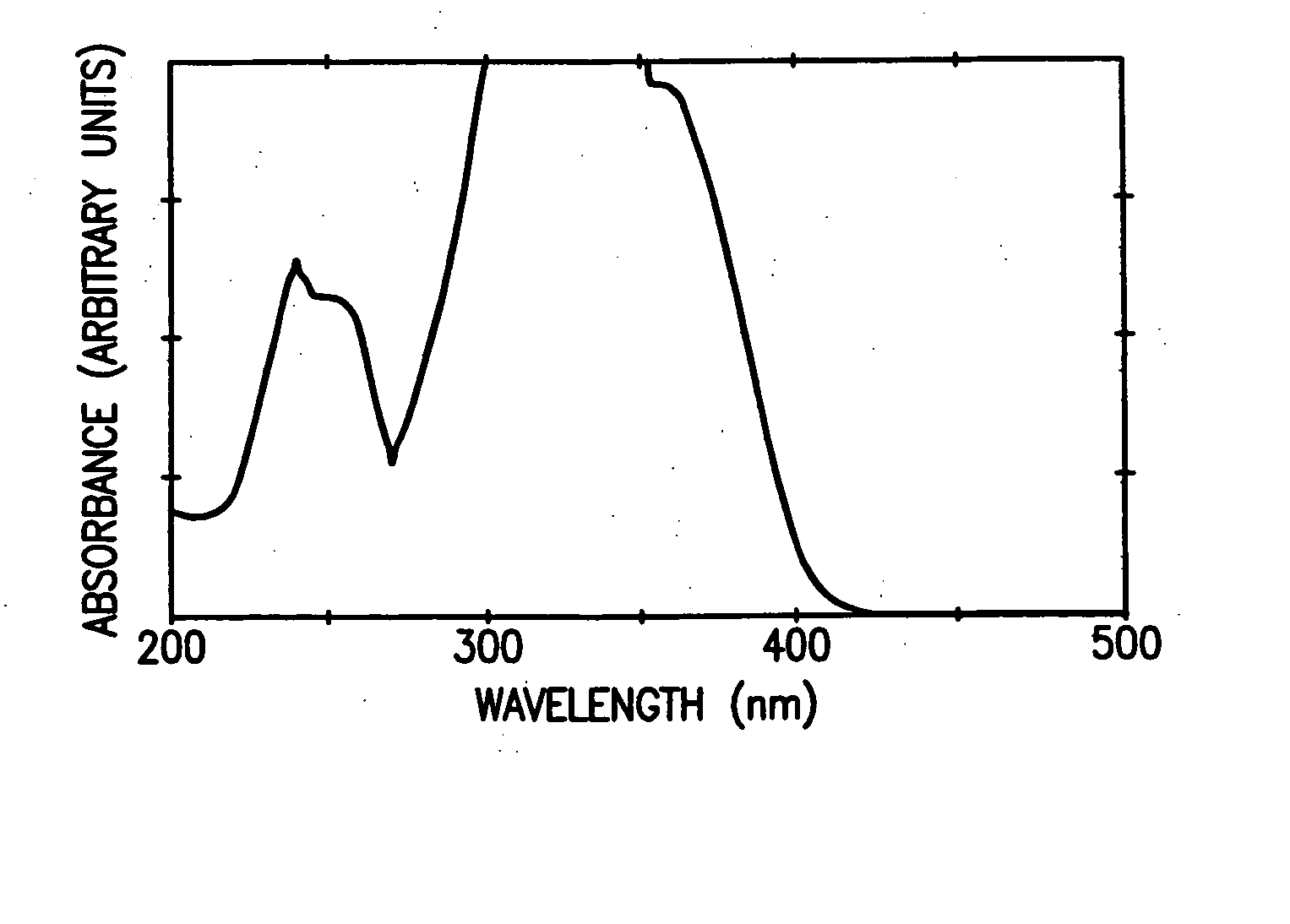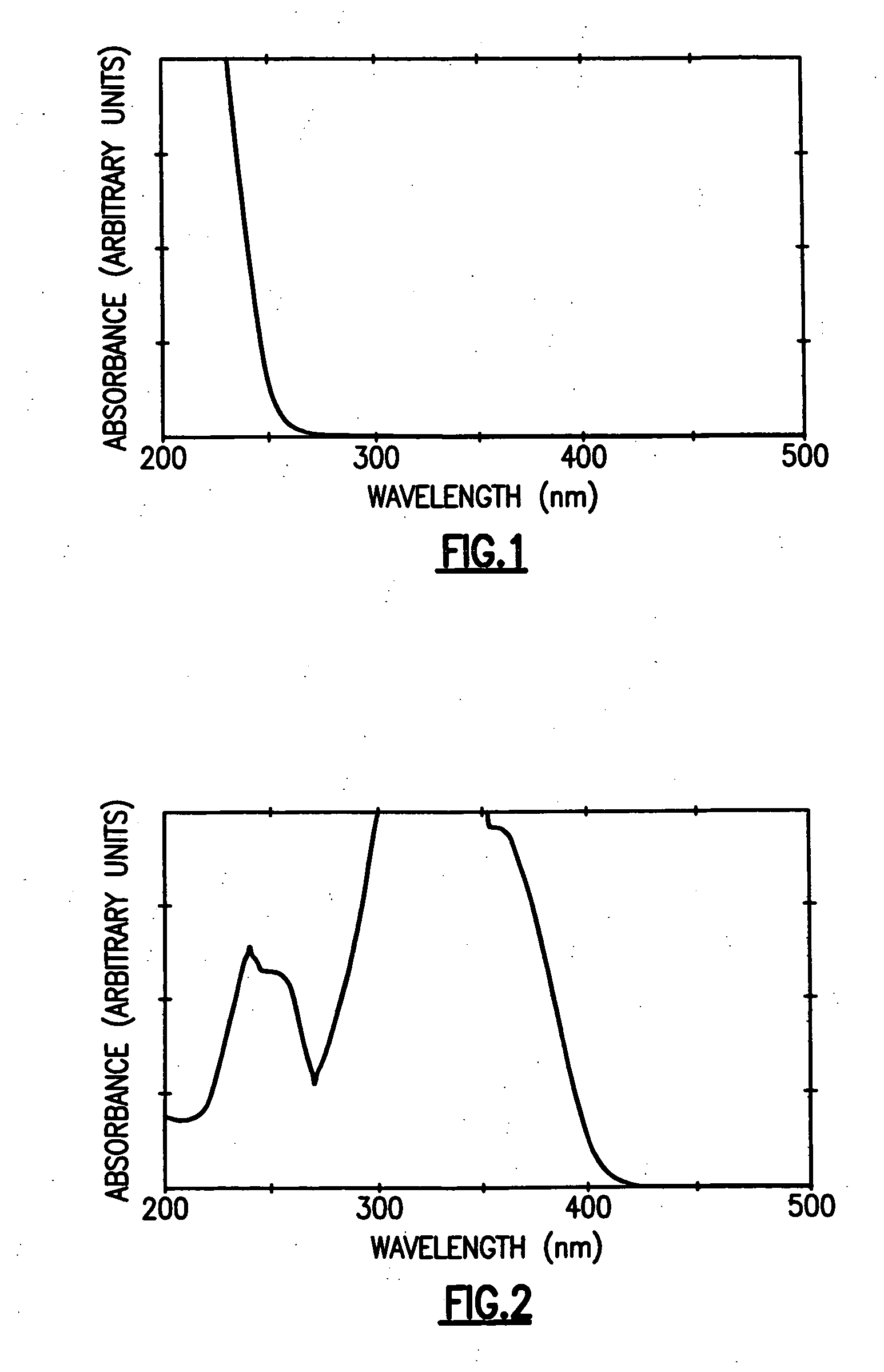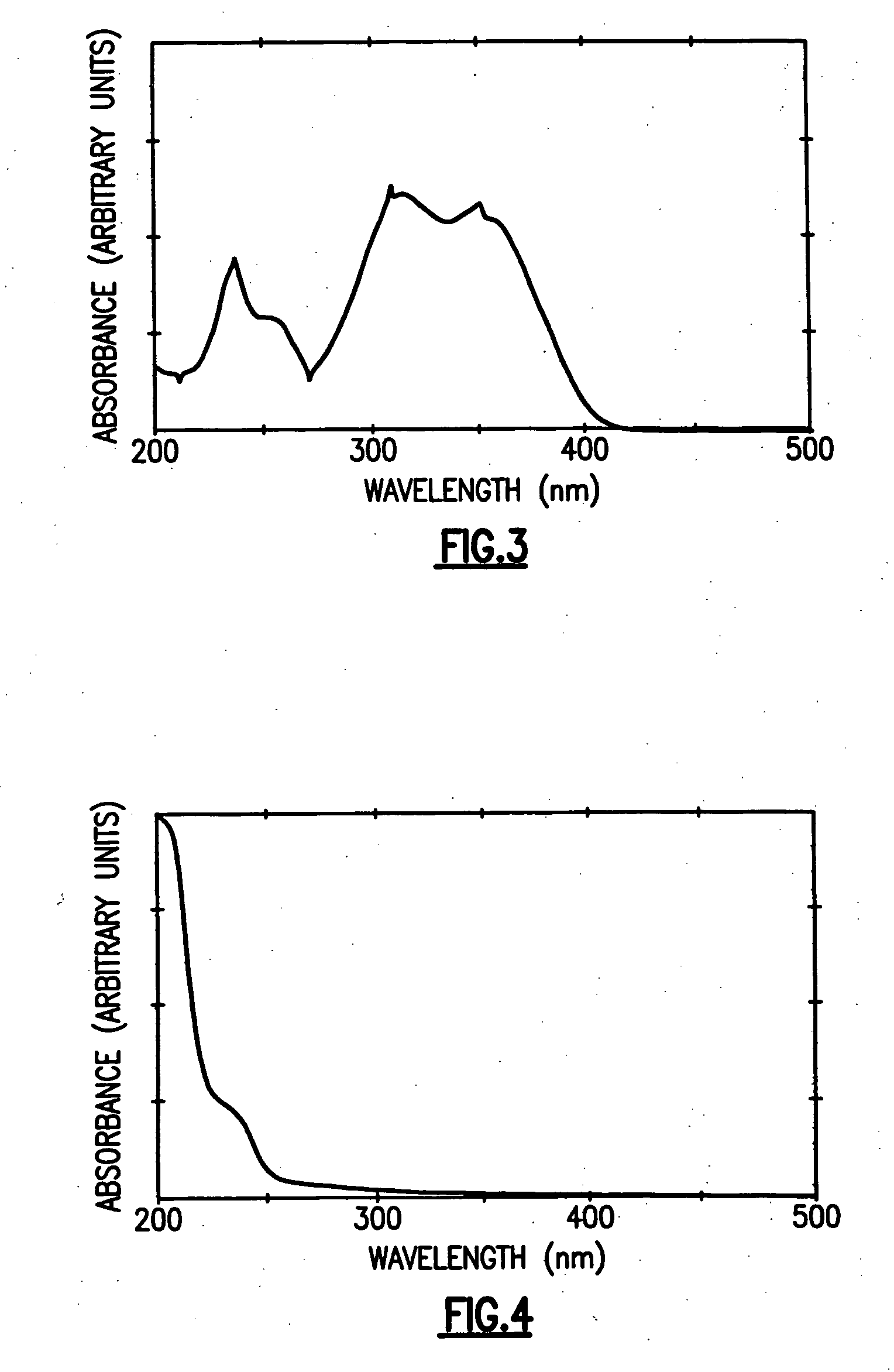Radiation-absorbing materials, ophthalmic compositions containing same, and method of treating ophthalmic devices
a technology of ophthalmic compositions and radiation absorption materials, which is applied in the field of radiation absorption materials, ophthalmic compositions containing the same, and methods of treating ophthalmic devices, can solve the problems of uv absorbers, difficult to incorporate prior-art uv-absorbing compounds into hydrogels, and reduced visual acuity
- Summary
- Abstract
- Description
- Claims
- Application Information
AI Technical Summary
Problems solved by technology
Method used
Image
Examples
example 1
Preparation of a high-molecular weight hydrophilic copolymer containing a hydrophilic monomer (N,N-dimethylacrylamide) and a UV absorbing monomer 2-[3′-t-butyl-5′-(methacryloxypropyl)-2′-hydroxyphenyl]-5-chloro benzotriazole
[0058] To a dry 1-liter, three neck round bottom flask were added, with anhydrous tetrahydrofuran (20 ml), N, N-dimethylacrylamide (7.9580 g, 80.4 mmole)) and (2-[3′-t-butyl-5′-(methacryloxypropyl)-2′-hydroxyphenyl]-5-chloro benzotriazole (1.5879 g, 3.705 mmole). The benzotriazole compound was prepared by a procedure described in Example 5 of U.S. Pat. No. 5,528,322, which is incorporated herein by reference in its entirety. The contents were bubbled with nitrogen for 30 minutes, then, 2,2′-azobisisobutyronitrile (Vazo-64 from DuPont, a free radical polymerization initiator, 0.0449 gram) was added and the contents were refluxed for 2 hours. The contents were then poured into 190 ml of ether to precipitate the product. It was then washed with ether. The final pro...
example 2
Preparation of a low-molecular weight hydrophilic copolymer containing a hydrophilic monomer (N,N-dimethylacrylamide) and a UV absorbing monomer 2-[3′-t-butyl-5′-(methacryloxypropyl)-2′-hydroxyphenyl]-5-chloro benzotriazole
[0059] To a dry 1-liter, 3-neck round bottom flask were added, with anhydrous tetrahydrofuran (50 ml), N, N-dimethylacrylamide (19.96 g, 201.6 mmole) and (2-[3′-t-butyl-5′-(methacryloxypropyl)-2′-hydroxyphenyl]-5-chloro benzotriazole (1.6118 g, 3.761 mmole). The benzotriazole was prepared by the procedure described in Example 5 of U.S. Pat. No. 5,528,322. The contents were bubbled with nitrogen for 15 minutes, then, 2,2′-azobisisobutyronitrile (Vazo-64, 0.0449 g) and mercaptoethanol (0.265 ml, or 0.2957 g, or 3.785 mmole) was added and the contents were refluxed overnight. Infrared analysis indicated no vinyl peak (at 1616 cm-1) remaining. The contents were poured into 500 ml of ether to precipitate the product. It was then redissolved in methylene chloride and t...
example 3
Preparation of Solution for Cleaning and Disinfecting Contact Lenses
[0060] Two solutions were prepared which contained the following ingredients:
IngredientConcentration (weight percent)sodium borate0.09boric acid0.64sodium chloride0.49sodium EDTA0.11Tetronic 110711UV absorber 2330-710.1 and 0.05PHMB1.2 × 10−4
Note:
1poly(oxypropylene)-poly(oxyethylene) ethylene diamine (or poloxamine) having a molecular weight of about 14,500, available from BASF Wyandotte Corp.
[0061] UV absorption spectra of the solution without UV absorber 2330-71 and with the UV absorber at concentration of 0.1 and 0.05 weight percent are shown in FIGS. 1, 2, and 3, respectively. The solutions with the UV absorber show strong absorption in the wavelength range from about 220 nm to about 380 nm.
PUM
| Property | Measurement | Unit |
|---|---|---|
| wavelength | aaaaa | aaaaa |
| wavelengths | aaaaa | aaaaa |
| wavelengths | aaaaa | aaaaa |
Abstract
Description
Claims
Application Information
 Login to View More
Login to View More - R&D
- Intellectual Property
- Life Sciences
- Materials
- Tech Scout
- Unparalleled Data Quality
- Higher Quality Content
- 60% Fewer Hallucinations
Browse by: Latest US Patents, China's latest patents, Technical Efficacy Thesaurus, Application Domain, Technology Topic, Popular Technical Reports.
© 2025 PatSnap. All rights reserved.Legal|Privacy policy|Modern Slavery Act Transparency Statement|Sitemap|About US| Contact US: help@patsnap.com



